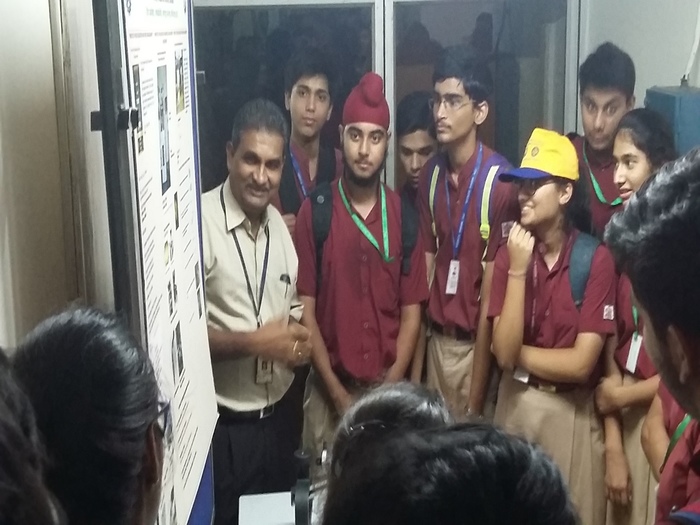Visit to National Physical Laboratory
The growth of tomorrow begins with the inspiration of today. Stagnation is the converse of science in many ways and therefore, the progress which science makes largely depends upon what the youth of today think, how they decipher the physical and chemical phenomena and how they work towards researching and contributing to a more robust future.
On the 28 September, 2018, 30 senior secondary students of the science stream accompanied by their teachers, Ms. Suman Aswal and Ms. Nausheen Wasi participated in an Open Day held by the National Physical Laboratory in New Delhi. The exercise was aimed at reinforcing a spirit of continuous enquiry amongst senior school students through experiments, display and introduction to machinery and new perspectives of concepts of the physical world which remain hidden.
The National Physical Laboratory is a national standards laboratory in India which maintains standards of SI units in India and calibrates the national standards of weight, frequency, time and measurements.
[gallery link="file" order="DESC" columns="2"]
The students were given a tour of the campus where they visited labs and understood the working principles of the complex machinery displayed. They first saw the force realisation machine. This checks the magnitude of force a quantity or substance can endure. Bridge and pulley making companies in India send their base materials and instruments to NPL for approval against the national standards.
People usually know Helium as a gas. But NPL has large plants for the liquefaction of this gas. Liquid Helium is widely used in superconducting machines such as MRI and Nuclear Magnetic Resonance. A very noteworthy discovery regarding the same has been the creation of almost zero resistance when a copper coil is dipped into liquid helium, saving a large amount of electricity from getting wasted.
The mind-boggling part of the tour came next. It dealt with Liquid Nitrogen. We may have seen it in restaurants on our dining tables making sure certain dishes remain cool till consumption. Liquid Nitrogen has a property which keeps substances and objects cold and frozen.
Students witnessed an exhibition of capacitors, ion traps and visited the crystallisation plant. A short film on the work done by the NPL over the years was shown towards the end as the students left with perhaps a renewed zeal for studying science.
Gauri Awasthi and Madhavi Bahuguna, XI-B.













